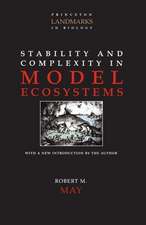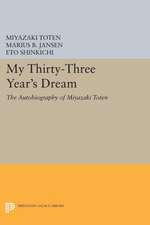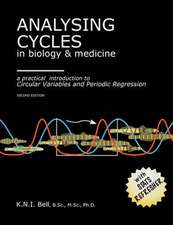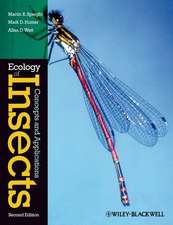The Dictyostelids: Princeton Legacy Library
Autor Kenneth Bryan Raperen Limba Engleză Paperback – 30 iun 2014
| Toate formatele și edițiile | Preț | Express |
|---|---|---|
| Paperback (1) | 497.84 lei 43-57 zile | |
| Princeton University Press – 30 iun 2014 | 497.84 lei 43-57 zile | |
| Hardback (1) | 1434.41 lei 43-57 zile | |
| Princeton University Press – 18 apr 2016 | 1434.41 lei 43-57 zile |
Din seria Princeton Legacy Library
-
 Preț: 437.79 lei
Preț: 437.79 lei - 16%
 Preț: 2324.11 lei
Preț: 2324.11 lei -
 Preț: 223.24 lei
Preț: 223.24 lei -
 Preț: 313.18 lei
Preț: 313.18 lei - 23%
 Preț: 780.26 lei
Preț: 780.26 lei -
 Preț: 376.99 lei
Preț: 376.99 lei - 16%
 Preț: 915.48 lei
Preț: 915.48 lei -
 Preț: 377.31 lei
Preț: 377.31 lei - 16%
 Preț: 882.80 lei
Preț: 882.80 lei - 16%
 Preț: 736.40 lei
Preț: 736.40 lei - 16%
 Preț: 860.09 lei
Preț: 860.09 lei -
 Preț: 340.11 lei
Preț: 340.11 lei -
 Preț: 362.12 lei
Preț: 362.12 lei - 16%
 Preț: 683.63 lei
Preț: 683.63 lei -
 Preț: 363.10 lei
Preț: 363.10 lei -
 Preț: 172.27 lei
Preț: 172.27 lei -
 Preț: 340.22 lei
Preț: 340.22 lei - 16%
 Preț: 835.12 lei
Preț: 835.12 lei -
 Preț: 266.84 lei
Preț: 266.84 lei -
 Preț: 317.65 lei
Preț: 317.65 lei -
 Preț: 329.09 lei
Preț: 329.09 lei -
 Preț: 265.73 lei
Preț: 265.73 lei -
 Preț: 260.54 lei
Preț: 260.54 lei -
 Preț: 314.84 lei
Preț: 314.84 lei -
 Preț: 402.66 lei
Preț: 402.66 lei -
 Preț: 464.18 lei
Preț: 464.18 lei -
 Preț: 351.09 lei
Preț: 351.09 lei -
 Preț: 483.81 lei
Preț: 483.81 lei - 19%
 Preț: 500.29 lei
Preț: 500.29 lei -
 Preț: 388.44 lei
Preț: 388.44 lei -
 Preț: 328.48 lei
Preț: 328.48 lei - 23%
 Preț: 742.04 lei
Preț: 742.04 lei -
 Preț: 372.92 lei
Preț: 372.92 lei -
 Preț: 328.70 lei
Preț: 328.70 lei - 19%
 Preț: 505.89 lei
Preț: 505.89 lei -
 Preț: 289.17 lei
Preț: 289.17 lei -
 Preț: 446.25 lei
Preț: 446.25 lei - 19%
 Preț: 575.53 lei
Preț: 575.53 lei -
 Preț: 447.20 lei
Preț: 447.20 lei -
 Preț: 484.19 lei
Preț: 484.19 lei -
 Preț: 271.12 lei
Preț: 271.12 lei -
 Preț: 314.46 lei
Preț: 314.46 lei -
 Preț: 362.51 lei
Preț: 362.51 lei -
 Preț: 307.07 lei
Preț: 307.07 lei - 19%
 Preț: 498.46 lei
Preț: 498.46 lei -
 Preț: 272.27 lei
Preț: 272.27 lei - 19%
 Preț: 458.44 lei
Preț: 458.44 lei -
 Preț: 406.20 lei
Preț: 406.20 lei - 19%
 Preț: 515.73 lei
Preț: 515.73 lei -
 Preț: 428.88 lei
Preț: 428.88 lei
Preț: 497.84 lei
Preț vechi: 614.61 lei
-19% Nou
Puncte Express: 747
Preț estimativ în valută:
95.29€ • 103.54$ • 80.10£
95.29€ • 103.54$ • 80.10£
Carte tipărită la comandă
Livrare economică 21 aprilie-05 mai
Preluare comenzi: 021 569.72.76
Specificații
ISBN-13: 9780691612553
ISBN-10: 0691612552
Pagini: 468
Dimensiuni: 171 x 232 x 34 mm
Greutate: 0.65 kg
Editura: Princeton University Press
Seria Princeton Legacy Library
ISBN-10: 0691612552
Pagini: 468
Dimensiuni: 171 x 232 x 34 mm
Greutate: 0.65 kg
Editura: Princeton University Press
Seria Princeton Legacy Library
Descriere
Descriere de la o altă ediție sau format:
Kenneth Raper tells how dictyostelids are isolated, cultivated, and conserved in the laboratory; how myxamoebae aggregate to form multicellular pseudoplasmodia; how fructifications arise by transformation of amoeboid cells into stalk cells and spores; and how similar cells can, under certain conditions, enter a sexual phase. For each known dictyost
Kenneth Raper tells how dictyostelids are isolated, cultivated, and conserved in the laboratory; how myxamoebae aggregate to form multicellular pseudoplasmodia; how fructifications arise by transformation of amoeboid cells into stalk cells and spores; and how similar cells can, under certain conditions, enter a sexual phase. For each known dictyost

















